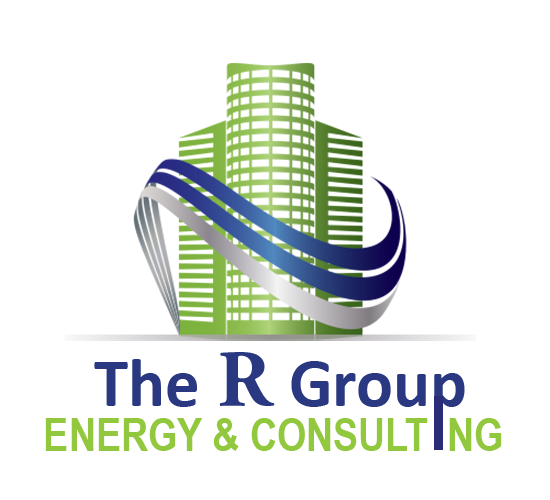ENERGY AUDITING

What is a Commercial Energy Audit?
A commercial energy audit report is a cautiously planned, which, if followed, will lead you to reduced energy costs. Every building is different, and each contains different opportunities which can reduce energy usage. This is why every different building requires its own unique energy audit.
During the energy audit, our energy auditor visits your site and interview your facility manager, inspect your lighting, air conditioning, heating and ventilation equipment, controls, refrigeration, air compressors, water consuming equipment, and anything else that is using energy. Depending on the type of the audit, the auditor may take measurements of temperatures, pressures, light levels, power draw, and other things.
An energy audit report typically contains a description of the building’s and existing energy consuming equipment currently in use, an energy balance and most importantly, a presentation of feasible energy conservation measures (ECMs). Each of these measures are developed so that the report includes:
- a description of the existing conditions
- a description of the proposed ECM
- expected annual savings associated with the ECM
- expected cost to implement the ECM
- simple payback and/or other financial measures, such as return on investment or life cycle savings
Some of the ECMs identified in the audit will take decades to pay for themselves, while others will start paying for themselves within months. Once you have the audit computed, it’s easier to decide where to invest your energy efficiency money.
The R Group engineers conduct their audits in accordance with the high standards developed by the American Society of Heating, Refrigerating, and Air-Conditioning Engineers (ASHRAE).
Integrity of Our Energy Audits Delivery
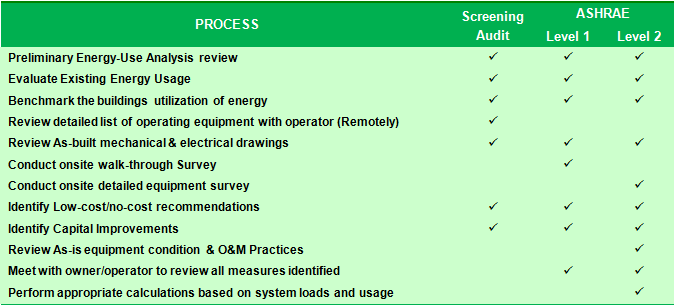
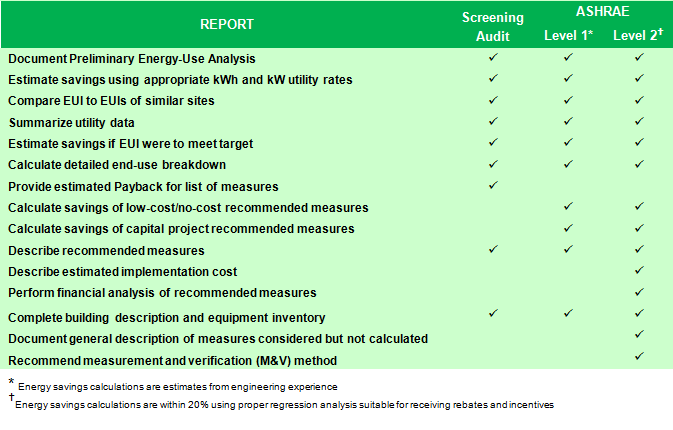
Energy Audit Benefits
- Defines and analyzes energy efficiency measures (EEM) for the purpose of developing a factual basis for budgeting capital projects. Energy efficiency measures can include deferred maintenance and equipment replacement, existing system upgrades such VFD’s and lighting retrofits, installation of new controls, expansion/retro-commissioning of sub-metering systems and other measures.
- This study includes our energy savings calculations, construct ability review, supports construction budget estimates, financial analysis and often includes conniving plans/equipment selection.
- Creates a “users guide” and technical reference that will be used by the Owners & maintenance staff to operate the facility more efficiently.
- Results in a credible roadmap for facility modernization wrapped in an energy efficient and cost-effective manner.
- Represents a powerful statement of your company’s commitment to sustainability.
Why are Energy Audits Important?
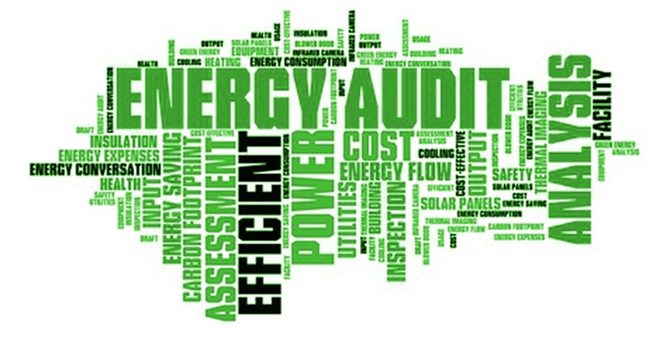
There are several reasons having an energy audit done is the right decision for most building owners.
How to Reduce Your Operation Expenses, Increase Your Profit
During the period of uncertainty, it is essential to optimize the operating expenses. One difference between companies that weather these difficult times and those which do not survive, will be that the survivors will have reduced their unnecessary expenditures before it is too late.
Unnecessary costs include costs for energy which isn’t necessary to use. In the past many companies have just considered utilities as “a cost of doing business.” By running an inefficient building, you are overpaying your utility for energy. It just not practical.
A good building energy audit will point the way to reduce your energy costs by 10 – 40%. For large organizations, this can be substantial, and could mean the difference between staying afloat and going under.
How to Determine Which Are the Best Building Energy Efficiency Measures
There are so many vendors pushing their energy efficient devices which are supposed to be energy efficient and some of them do work. Just because a device saves energy does not mean it is a good investment. And even if it is a good investment, there may be better energy efficiency investments alternatives available.
For example, triple-pane windows that you hear advertised on the radio usually save energy, but for some buildings, they will may consume more energy. It is usually a better investment to replace your fluorescent and incandescent light bulbs with LEDs than it is to change out your windows.
So how do you determine what is the best energy management methods for your building.
How to Increase the Value of Your Building
We understand the argument that if your tenants are paying the utility bills, then there is no reason to invest money in making your building energy efficient. After all, you won’t be gaining anything from energy savings.
Increasing the energy efficiency of your building will increase its value. If you have a “green” building, your tenants will be happy to pay higher rents to occupy your building.
On average for every dollar spent in energy efficiency improvements, evaluated building value increases several times.
See what you can’t see in Infrared!
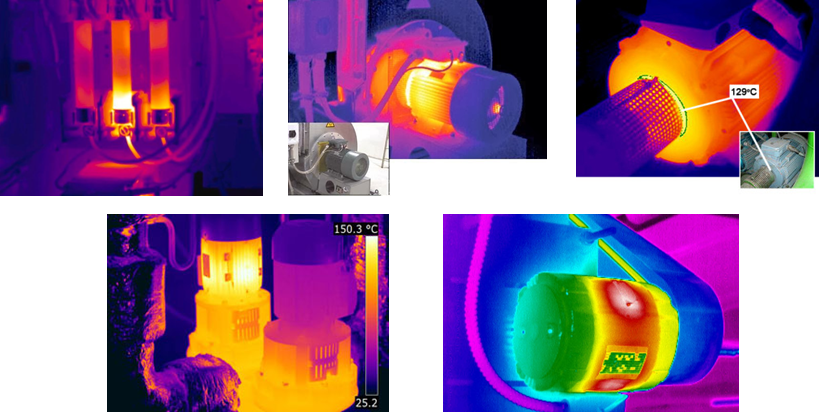
Our energy auditing process can quickly identify problems through the use of advanced infrared technology applications.
Thermography is the technique that extends human vision through the infrared spectrum, because the vibration of electric and magnetic fields that propagate in space at the speed of light, generate waves that form the electromagnetic spectrum. Thermography in the area of maintenance has unmatched comparative advantages and is one of the pillars of Predictive Maintenance, therefore it is possible to increase productivity, sustain operations, and avoid electrical and mechanical failures, saving on corrections of fatigue of materials.
How much money/energy can be saved by getting an energy audit?
When discussing about possible energy savings in a facility from performing an energy audit, it’s impossible to make a reasonable estimate without understanding how the building operates and uses energy.
With that said, we’ve seen savings upwards of 40% on some facilities, with the average savings being around 10-20%. If the facility has already had energy audits in the past, and the identified measures were implemented, it’s possible that the facility is already efficient, and in that case, there might be much less energy savings potential. If the facility has been in operation for many years without having had an energy audit, it’s very possible that an energy audit can save you a significant amount of money.
If you want to make an easy estimate, for a building that has not aggressively pursued energy efficiency in the past 10 years, assume 20% savings potential. For a building that has been pursuing energy efficiency in the past 5 years, assume 10% savings potential. These estimates cannot be too far from the truth.
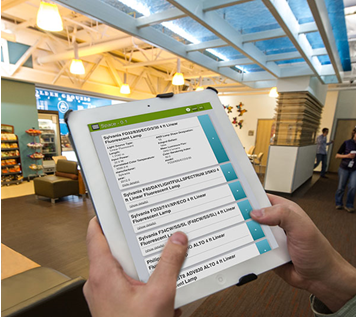
By having this consultation, we can decide if an energy audit is necessary, and if you do, what kind would best suit you and your facility.
Since it’s extremely difficult to assess how much your facility can save without knowing more about your company, we will gladly provide you with a Free Energy Audit Consultation.
The quality of your energy audit report matters, here’s why…
Not all energy auditors have same degree of proficiency. Most commercial energy audit customers may not be able identify qualified energy auditors from novices. Energy auditing is a profession. The R Group has been passionate for years by delivering the highest quality energy audit reporting.
A poorly done audit can result in you wasting thousands of dollars:
- Installing the wrong energy conservation measures. Most facilities have a limited budget for energy efficiency. It is best to use that budget on the best energy conservation measures. Poorly done audits often miss these.
- Wasting thousands of dollars installing energy conservation measures that won’t save money or that will save much less than the audit would lead you to believe.
- Wasting thousands of dollars in wasted energy from not knowing about no-cost/low-cost measures that could have saved you money. These measures often are related to HVAC control, and inexperienced auditors often miss these.
What Do Energy Audits Cost? Are They Worth It?
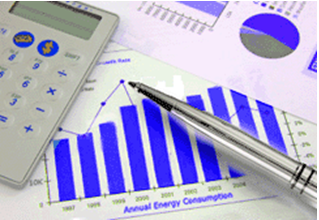
Costs of energy audits vary significantly depending on the size and complexity of the facility and the level of audit details. According to one source, a typical range of costs for energy audits of commercial buildings is $0.08 to $0.24 per square foot. A simple ASHRAE Level I audit can uncover easy; no-cost adjustments you can make to equipment in your building that can immediately reduce energy costs by 5 – 10%. A more systematic Level II or III audit can lead you to capital improvement projects with favorable return on investment, even considering the cost of the audit taken into account as part of that investment.
My energy audit is complete; now what?
A proper energy audit will include a list of recommended measures, along with estimates of energy cost savings and implementation cost for each measure. The energy auditor will typically use these numbers to calculate payback time, return on investment, benefit-cost ratio, or some other indicator of cost-effectiveness for each measure or set of measures.
Now it’s time for you to take action on the measures that meet your investment criteria. If you need help with this decision-making process or wish to investigate PACE financing options for your selected measures, we’ll be happy to help. For more in-depth information on energy audits, refer to U.S. Department of Energy: A Guide to Energy Audits.
Implement appropriate energy savings measures
Take the steps to make an informed decision on the measures that meet your investment criteria. We help you with this decision-making process.
We have numerous resources to evaluate the best financing option for your projects.
Feel free to contact our consultant so we can provide unbiased assistance in identifying and selecting financing and contractors to install your projects.
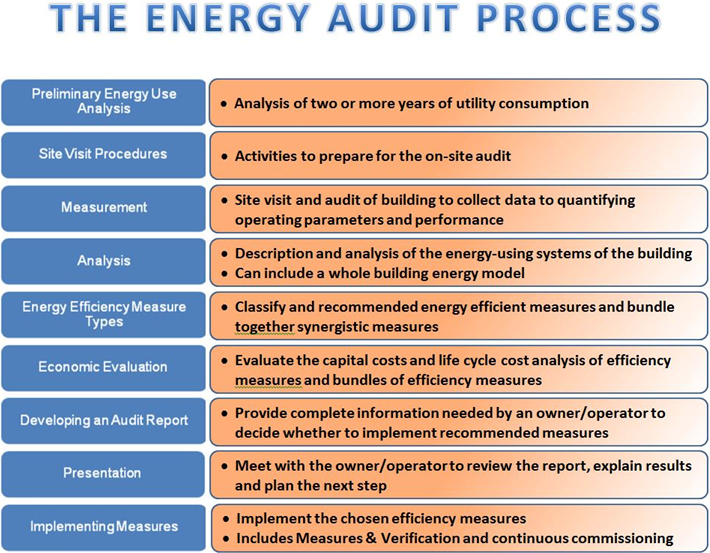
There are two principal reasons to establish a capital improvement baseline. First, it informs the financial performance evaluation of measures and packages. The baseline enables the analyst to differentiate for the client the costs of maintaining basic building functionality or meeting other goals not associated with energy efficiency versus significantly improving efficiency. For instance, if the analyst or facility manager expects a boiler to reach the end of its life in about five years, the cost of a premium-efficiency condensing boiler is incremental to the cost of the future replacement (which, to maintain basic building functionality, would be a standard-efficiency unit). The second reason to establish a capital cost baseline is to identify a particular opportunity for efficiency measures. Many planned improvements can be easily redesigned for improved energy efficiency and downsize (or even eliminate) mechanical equipment, such as glazing and roof replacements and interior remodels. Similarly, a planned major HVAC equipment replacement or expansion indicates an opportunity to save capital costs by implementing load-reduction measures.
What are the Differences between and ASHRAE Level 1, Level 2 and Level 3 Energy Audit?
An energy audit by an electrical contractor will not likely cover all energy consuming equipment. For example, it is likely that they will miss anything building envelope or boiler related, as they will focus only on those items that might generate revenue for their company: namely transformers and lights. These limited scope type of audits only serve to help the contractor and are a disservice to both the customer and the industry, as the concept “energy audit” loses value in the eyes of the customer.
Because there was so much variance in the industry as to what exactly composes an energy audit, ASHRAE kindly stepped in and defined varying degrees of energy audit precision. These different levels of audits are now called ASHRAE Level I, ASHRAE Level II and ASHRAE Level III audits.
Some buildings don’t require hundreds of hours of engineering time, and a smaller audit will serve the purpose, whereas for other buildings, the additional time and analysis is well worth the investment. A rightly sized energy audit will provide the right balance between energy audit cost and value of the audit.
The ASHRAE Level audits are recommendations. They are not law. You can always select as per audit requirement. What is most important is that you get value for your money. If you spend $10,000 on an ASHRAE Level II audit that finds energy savings potential of $5000, then you overpaid for the audit, and probably should have gotten an ASHRAE Level I audit.
Preliminary Energy-Use Analysis (PEA)
The PEA precedes an audit of the building. During the PEA the analyst analyses the historic utility use, peak demand, and cost; develops the Energy Cost Index (ECI) of the building (expressed in dollars per floor area per year); and develops the Energy Utilization Index (EUI) of the building (expressed in kBtu/ft2 [MJ/m2] per year). The analyst then compares the building EUI to similar buildings’ EUIs to assess the potential for improve energy performance and to determine whether further engineering study and analyses are likely to produce significant energy savings. Monthly energy use and peak demand or, if available, interval billing data (such as 15-minute data), are reviewed to identify efficiency or behavioral modification opportunities.
All three levels of audits require a Preliminary Energy Use Analysis which involves the following:
- a site visit to assess the building and energy consuming equipment
- analysis of the utility bills to determine whether savings can be had by changing the utility rate
- a summary of utility bill data
- calculation of the energy use intensity (EUI)
- bench marking to compare the site’s energy usage to that of similar sites in the same region
- estimate of the energy and costs saved if the building met an energy use intensity target
Level 1—Walk-Through Survey
First, the building’s energy cost and efficiency are assessed by analyzing energy bills, compiled in the PEA, and conducting a brief on-site survey of the building. A Level 1 energy survey will identify low-cost/no-cost measures for improving energy efficiency and provide a listing of potential capital improvements that merit further consideration. Because calculations at this level are minimal, savings and costs are approximate. A Level I analysis is applicable when the desire is to establish the general energy savings potential of a building or to establish which buildings in a portfolio have the greatest potential savings. Level I results can be used to develop a priority list for conducting Level II and III audits.
Level 2—Energy Survey and Analysis
A Level II audit involves a more detailed building survey, including energy consumption and peak demand analysis. A breakdown of energy end uses within the building is developed. A Level II energy analysis will identify and provide the savings and cost analyses of all practical energy efficiency measures (EEMs) that meet the owner’s/operator’s constraints and economic criteria, along with proposed changes to operation and maintenance (O&M) procedures. It may also provide a listing of potential capital-intensive improvements that require more thorough data collection and engineering analysis as well as an assessment of potential costs and savings. This level of analysis will provide adequate information for the owner/operator to act upon recommendations for most buildings and for most measures.
Targeted (Level 3) Audits
A targeted audit is an investigation with a limited scope, typically a single energy-using system, central plant, or area of the building. Some examples include lighting-only audits, cooling tower replacements, boiler control assessments, and tenant improvement projects. A targeted audit will identify and provide savings and cost analyses for retrofits and control strategy improvements for the systems of interest. The level of effort may be tailored to the needs of the facility. Because the audit is limited to a portion of the building, whole-building approaches such as end-use allocation and comparisons with historical utility bills cannot be used to provide a check on analytical methods. Similarly, whole-building simulation is typically not a cost-effective approach except for large systems. For this reason, targeted audits rely on measurements, data logging, and trend data to provide a check on the energy use estimates in the base case.
